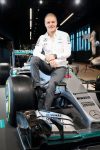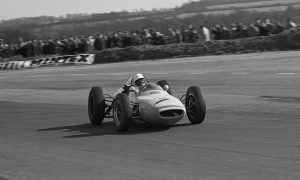
©XPB Images, Wri2, Williams
2017 REGS: HARDER THAN PREVIOUS OVERHAULS IN 2009 AND 2014?
While Symonds would not have minded more resources at Williams – “a small incremental improvement in our budget would have a big effect” –, he agrees with recent restrictions on windtunnel testing and CFD simulation work, as he believes these entice F1 design offices to favour effectiveness.
However, 2017 marks the first rules revolution that teams have had to prepare within the tight confines of the windtunnel and CFD limits. Symonds actually took part in the drafting of this year’s regulations along with the other tech chiefs. Concretely, F1 engineers will have to be on top of the new aero rules… without being allowed to use their favourite high-tech tools as much as they’d like. But it did not seem to bother Symonds.
“I much prefer this era, where you have to work very effectively. I found that the inefficiencies in some of the ways we used to work were quite offensive really. It is a fantastic challenge now to get, in that context, 65 runs in the wind tunnel a week [and a maximum of 60 hours of tunnel occupancy per week]: everyone of them must count, everyone of them must provide useful data. It has transformed windtunnel testing. In the last ten years, there has been a huge change from the first regime set by the FOTA – which to be honest was not very much a restriction – to now, where we’re doing so much less. To me it is much more the way I like to do engineering.
“The last two extreme era changes we made were 2009, where we had no restriction at all, and 2014, where we had some restrictions, a lot less than we got now (around 80 runs a week compared to 65 now, quite a high percentage change). Also, for 2014, we had a lot of notice about what the regulations were, so we could start our project quite early. With this very new set of rules, we had a good idea in March and the final draft in May for a car that had to go out in March. It is quite tight, but it is the same for everyone, and in a way that is where a team like us, which works very much on efficiency, I hope, can benefit. It is not possible anymore to hire an extra hundred people or another windtunnel.”
That said, Symonds admits the three teams that have been helping Pirelli develop its 2017-spec tyres – Mercedes, Red Bull, and Ferrari, all of which had the financial might to manufacture and supply a mule chassis – will get an invaluable edge from these tests.
The FIA and F1’s official tyre supplier did take a series of measures to make sure data will be shared among all the teams, but the veteran engineer believes the Big Three’s feedback will naturally steer Pirelli’s development to their liking. The money factor can never be underestimated, nor erased in motorsport.

©XPB Images
BACK TO THE LEAN DAYS OF YORE
To achieve a lot with little means is a skill Symonds has honed, almost unwittingly. When he took up a consulting role at Manor in 2011, the position was seen as a stop-gap solution in the wake of Renault’s Crashgate scandal. But it turned out to be a valuable experience in DIY, much like the first few years of his storied career.
Symonds helped design the 2013-spec MR02 with limited resources (five days of windtunnel testing per month). While the experience was quite unsettling for a man who had previously worked for a manufacturer, it was equally eye-opening and enriching for his approach to building an F1 car.
“You cannot believe how interesting it was for me to spend a couple of years working with Marussia. At Benetton, in the late nineties we weren’t a very rich team, at Renault we were, but in Benetton we had to be very efficient. In Marussia, you knew what every part of your car costs, you knew exactly how much time you spent in the wind tunnel, how much you spent on designing and manufacturing…
“The size of the team made it possible to get everyone working together in the same office, and have very good communication. It’s something I’ve tried to implement at Williams – a closer communication between aero, design and vehicle performance. My time in Marussia was a real education again. It was very difficult but enjoyable, and for sure, it refocused me on efficiency.”

©XPB Images & Wri2






